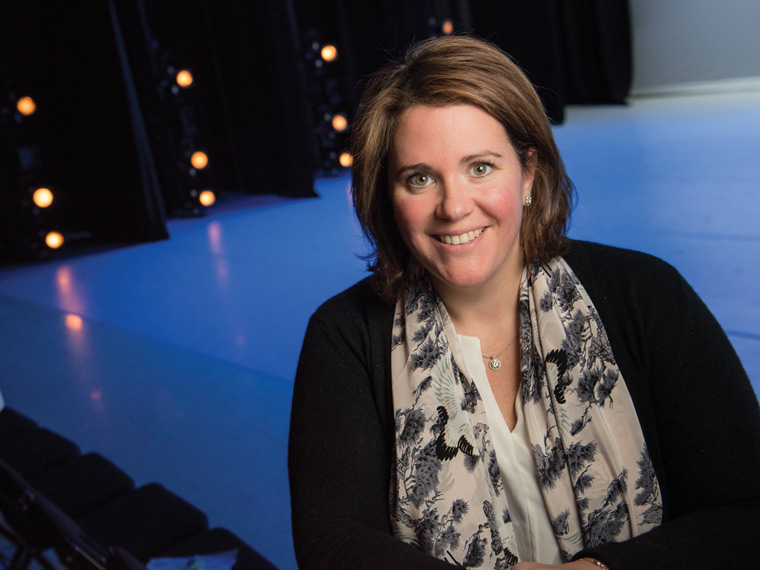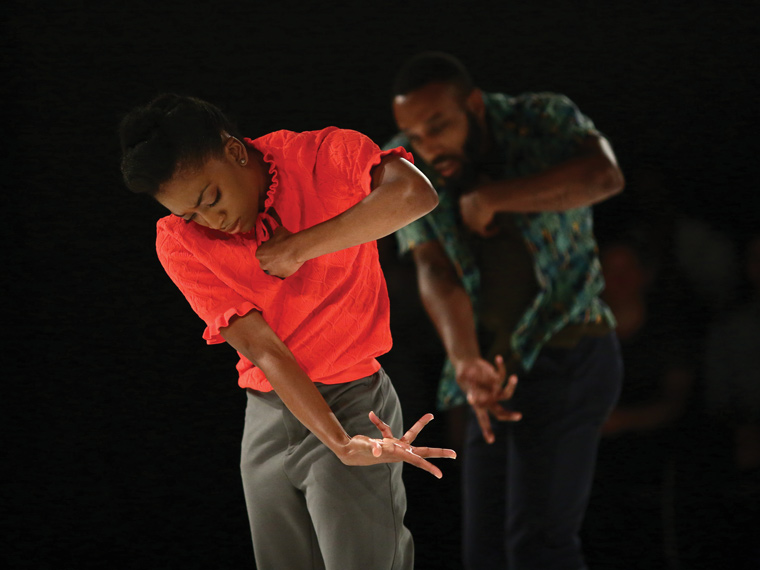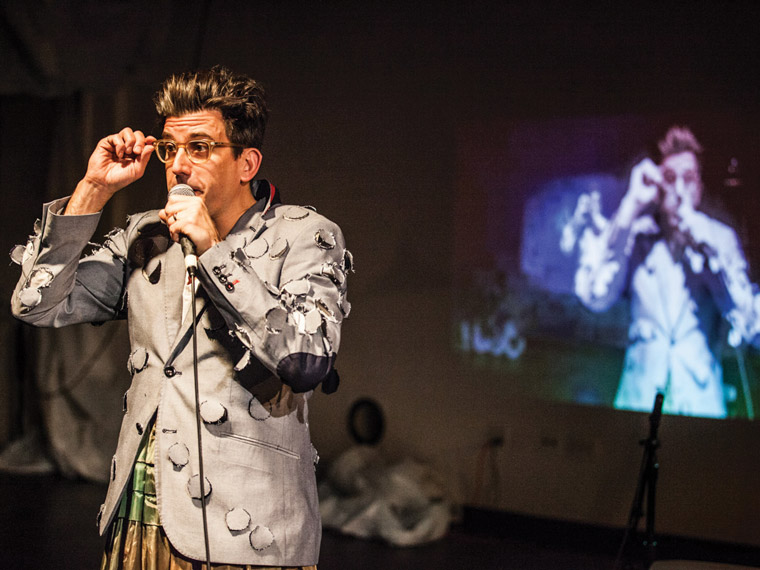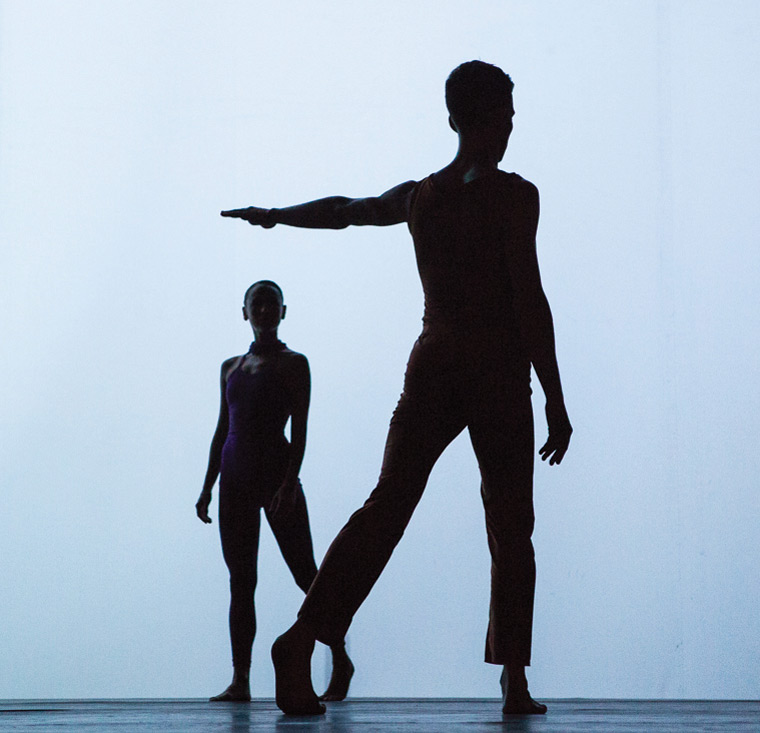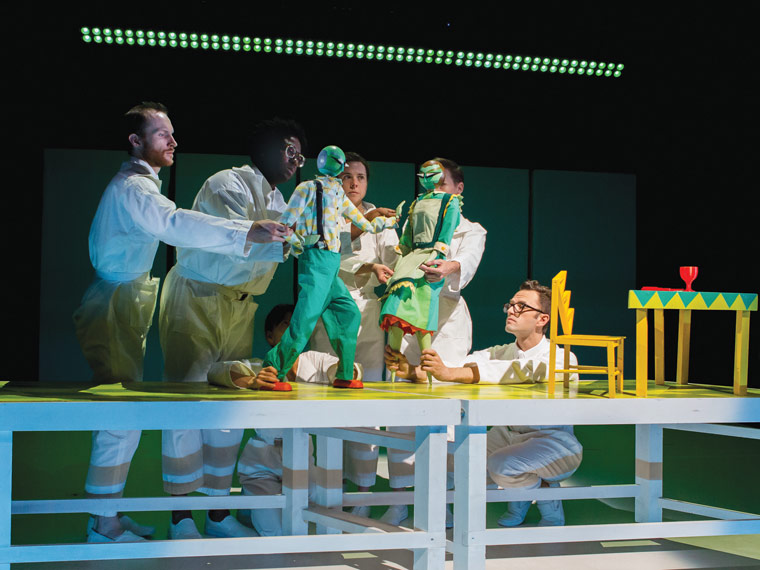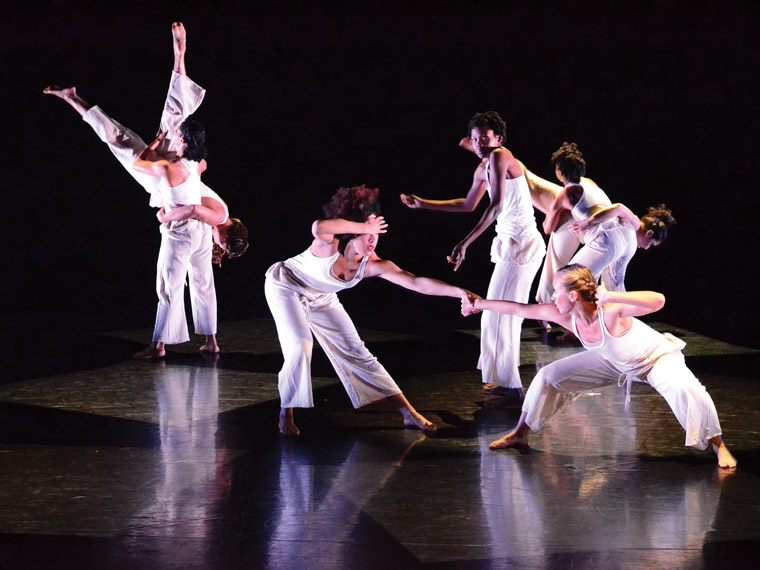When she took the lead at the contemporary performing arts organization now known as Lumberyard, Adrienne Willis ’01 sought to steer it toward a bold new destination. Next year, it arrives.
Above Adrienne Willis’ desk in her Manhattan office is a 19th-century pictorial map of Catskill, New York, depicting the town’s most significant landmarks, from Jerome Walsh’s covered brickyard to the Rip Van Winkle Factory. On the facing wall is a sleek architectural rendering of a landmark-to-be: the performance and residency site that will rise out of an abandoned lumberyard in Catskill and open its doors in the summer of 2018. It’s the new home of the organization Willis ’01 has led since 2010, when it was a ballet school known as the American Dance Institute, or ADI. But Willis has reimagined the institute, first as a theatre and then as an incubator and outlet for contemporary performing arts, a boundary-bending art form that encompasses dance, performance art, experimental theatre, music, and visual arts. Last year, in preparation for its move upstate, it was reborn as Lumberyard.
Willis, in fact, is rather adept at reimagination. At Sarah Lawrence, she concentrated in theatre and economics. After graduating, she worked as a stage manager for two years, studied entertainment law—“I kind of missed the other side of my brain,” she says—then got her master’s degree in global affairs at NYU. In 2006, a play she’d directed at Sarah Lawrence would help integrate, and excite, both sides of her brain.
“I really like being challenged. I like taking risks and trying new things.”
The play, Watch Your Step, a story about landmines written by a former classmate, Jason Wells ’01, went on to tour the United States. During the development of the play, Willis met Bobby Muller, director of the nonprofit Vietnam Veterans of America Federation. Five years later, Muller hired Willis as the federation’s director of strategy and communication. But it was Muller’s ex-wife, surgeon and philanthropist Solange MacArthur, who truly changed Willis’ life. The benefactor of a dance academy in Maryland, MacArthur hired Willis as executive director to run the school and take it in a new direction. “She wanted it to have national significance,” Willis says.
Hiring Willis might have seemed like a risky step. At 31, she had no professional experience with dance or with leading a team of creatives. But she did have a compelling need to be challenged, an aversion to reworking familiar soil, and a clear idea of the new direction in which she wanted to take the academy. “Adrienne has incredible visionary skills,” says Karen Lombardo, a senior adviser at Lumberyard who also serves as Willis’ executive coach. “Her vision for the organization is unparalleled.”
And Willis isn’t afraid to pursue that vision. “I really like being challenged,” she says. “I like taking risks and trying new things.” At a time when funding for the arts is under attack at the federal level and increasingly scarce at all levels, Willis’ vision, coupled with her business acumen, made her the right leader at the right time. She set out to transform the academy into a performance space for contemporary dance. In need of a staff to support it, she looked to the Sarah Lawrence community. “At Sarah Lawrence,” she says, “you’re thrown into situations, and you work together to figure out solutions.”
And that’s pretty much how things played out. Willis hired Julia Morrissey ’02 as her finance manager and later brought in Sarah Lawrence producer Ruth Moe as performance series director, Kit McKay ’01 as associate producer, and Wells as director of production. In Willis’ first two years as executive director, the American Dance Institute mounted a dozen productions featuring pioneers of American contemporary performing arts, including two members of the Sarah Lawrence theatre faculty, David Neumann and Dan Hurlin ’79, both of whom would become artistic advisers at ADI.
“At Sarah Lawrence, you’re thrown into situations, and you work together to figure out solutions.”
But Willis wanted ADI to be more than just a performance space. She spent months researching opportunities, she says, that would “ensure we were filling a need that others weren’t.” In 2011, she launched the Incubator, a residency program that would allow dance and performing arts companies to live and rehearse on site, the better to hone their works during the final stages of preparation.
Then, in 2012, Willis faced a challenge she hadn’t anticipated: the death of MacArthur, who had left a generous bequest to ADI. Keeping in mind MacArthur’s directive to make sure the organization had real significance—that it would make a lasting impact on the field—Willis decided to move the organization to New York City, which she calls “the epicenter of contemporary performing arts.” After the move, ADI’s board of directors named Willis artistic and executive director, to reflect her expanded role.
Meanwhile, she’s continued to expand the Incubator, a program that’s proven revolutionary for artists and presenters. “One of the biggest issues with contemporary performing arts is that there’s no real creation model for it similar to theatre, where you rehearse for several weeks and then you go into a tech week and then you perform,” Willis says. Most contemporary performing artists don’t get that tech week, a concentrated period of rehearsal time in which they meld choreography with the production elements that are integral to the art form.
Willis cites a recent Mellon Foundation study showing this lack of preparation has hurt both artists and the theatres and other organizations that present their productions. “The presenters weren’t getting work that was finished,” she says, “and audiences and reviewers were seeing work that wasn’t ready, and all of that had a huge negative impact on the field.” As a remedy, Willis envisioned a facility dedicated to technical residencies, technical support, and previews that would allow contemporary performing artists in New York City to present works that were truly finished. That vision will come to fruition in 2018 with the opening of Lumberyard.
“This is such an exciting initiative,” says choreographer John Jasperse ’85, director of the dance program at Sarah Lawrence, who’s had one residency with ADI and plans another in 2018 with Lumberyard. “There’s an enormous jump between a dance studio and a performance environment. You really don’t know until you’re in a theatre how your technical ideas will work.” Lumberyard will afford designers the opportunity to recreate all the major stages in New York City so artists can test and refine their ideas in a space exactly like the one in which they’ll be performed. It will also enable them to gauge audience response to works before their official premiere, not just through applause (or the lack thereof), but also through a post-performance reception for artists and audience members.
Developing Lumberyard’s audience, in fact, is a priority for Willis, which is why she hired an audience educator to speak with guests before each performance. Many are unfamiliar with contemporary performing arts, so Willis says it’s important to let them know that “it’s okay not to understand it.” Hiring Jason Wells as director of production was also a strategic decision. No matter how wild an artist’s request—he’s made it rain onstage and figured out a way to make black paint run down the walls during a performance—Wells is inclined to try to make it happen. Willis refers to this as his “philosophy of yes.” Given what she’s accomplished at the American Dance Institute and what she hopes to accomplish at Lumberyard, it’s an apt description of her own approach as well.
Written by Leslie Garisto Pfaff
Photo of Adrienne Willis by Liz Lynch
